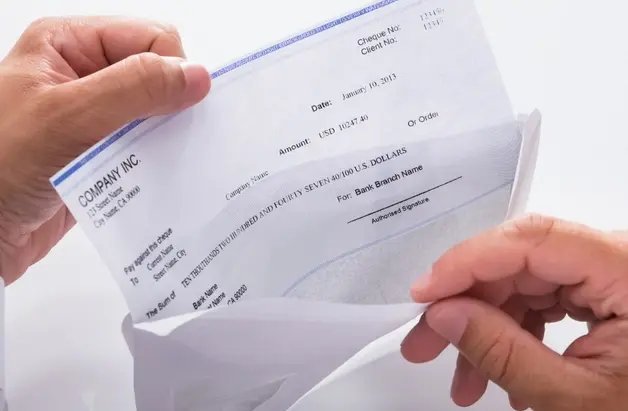
Pay stubs are more than just a slip of paper—they are a critical part of tracking your earnings, deductions, and taxes. For employees, understanding how frequently pay stubs should be issued is essential to maintain financial clarity, ensure compliance with labor laws, and manage personal budgets effectively.
This article explores how often you should receive pay stubs, the factors influencing their frequency, and why keeping them organized is important.
What Is a Pay Stub?
A pay stub, also called a paycheck stub or earnings statement, is a document provided by an employer that details an employee’s pay for a specific period. It typically includes:
- Gross pay: The total earnings before deductions.
- Net pay: The actual amount received after taxes and deductions.
- Taxes withheld: Federal, state, and local taxes.
- Deductions: Health insurance, retirement contributions, and other benefits.
- Hours worked: For hourly employees.
- Year-to-date totals: Cumulative earnings and deductions for the current year.
Pay stubs serve multiple purposes. They help employees track income, verify hours and wages, support loan or rental applications, and ensure accurate tax reporting.
Legal Requirements for Pay Stub Frequency
The frequency of receiving pay stubs is often dictated by state labor laws. While federal law in the United States does not explicitly mandate pay stubs, many states require employers to provide a written statement of earnings either with each paycheck or upon request.
Common pay frequencies include:
- Weekly: Employees receive a paycheck and pay stub once a week, typically every Friday. This is common in industries like retail, construction, and hospitality.
- Biweekly: Every two weeks, resulting in 26 pay periods per year. Biweekly pay is standard for many corporate and administrative jobs.
- Semi-monthly: Employees receive pay twice a month, often on the 15th and last day of the month. This leads to 24 pay periods per year.
- Monthly: Once a month, common in some salaried positions, especially for high-level professionals.
The law often specifies that employers must provide a pay stub each time an employee is paid, regardless of pay frequency. This ensures that employees always have an accurate record of their earnings and deductions.
Factors Affecting How Often You Receive Pay Stubs
Several factors determine how frequently pay stubs are issued:
1. Employer Pay Schedule
Your employer’s payroll schedule is the primary factor. Some employers choose weekly pay to accommodate hourly workers, while others prefer biweekly or semi-monthly schedules for efficiency.
2. Employment Type
- Hourly employees: Usually receive weekly or biweekly pay stubs reflecting hours worked and overtime.
- Salaried employees: Often receive pay stubs semi-monthly or monthly.
- Contractors and freelancers: May receive pay stubs according to project completion or agreed payment schedules.
3. State Regulations
Different states have specific rules regarding pay stub frequency. For example:
- California: Requires employers to provide a wage statement with every paycheck.
- New York: Mandates employees receive a pay statement each payday.
- Texas: Employers are not required by law to provide a pay stub, though most do.
4. Company Policy
Even if state law does not strictly require pay stubs, many companies provide them as part of their payroll process for transparency and employee satisfaction.
Why Regular Pay Stubs Matter?
Receiving pay stubs consistently is important for several reasons:
1. Financial Planning
Pay stubs provide a clear picture of your income, taxes, and deductions. Knowing exactly how much you are earning and what is being withheld helps with budgeting, saving, and planning for expenses.
2. Error Detection
Mistakes in payroll can occur. Regular pay stubs allow you to quickly spot errors in hours worked, overtime calculations, or deductions, enabling you to address them promptly.
3. Tax Filing
Pay stubs are essential for preparing annual tax returns. They provide a breakdown of federal, state, and local taxes withheld, as well as contributions to retirement plans and other benefits.
4. Loan and Rental Applications
Lenders and landlords often require recent pay stubs as proof of income. Having up-to-date pay stubs makes it easier to apply for loans, credit, or housing.
5. Legal Protection
Pay stubs serve as a legal record of your earnings and deductions. In disputes with your employer over pay, having documented proof can protect your rights.
How to Receive Pay Stubs?
Pay stubs are provided in two main formats:
- Paper Pay Stubs: Traditionally attached to your physical paycheck.
- Electronic Pay Stubs: Many companies now offer online payroll systems where employees can download or view pay stubs anytime. Electronic stubs are convenient, eco-friendly, and reduce the risk of loss or damage.
Employees should ensure they know how to access their pay stubs, whether digitally or physically, and retain copies for future reference.
Tips for Managing Pay Stubs
To maximize the benefits of your pay stubs, consider these tips:
- Keep a Record: Maintain organized folders, either digitally or physically, for all pay stubs.
- Check for Accuracy: Review each pay stub for errors in hours, rates, deductions, and taxes.
- Understand Deductions: Familiarize yourself with the different types of deductions, such as health insurance, retirement contributions, and tax withholdings.
- Track Year-to-Date Totals: Regularly monitor your cumulative earnings and deductions to plan for taxes and financial goals.
- Request Missing Pay Stubs: If you don’t receive a pay stub as per your pay schedule, contact your HR or payroll department promptly.
Conclusion
Pay stubs are essential documents that provide transparency, aid in financial planning, and protect employees’ rights. The frequency of receiving pay stubs depends on your employer’s pay schedule, your employment type, and state regulations. Most commonly, employees receive pay stubs weekly, biweekly, semi-monthly, or monthly.
